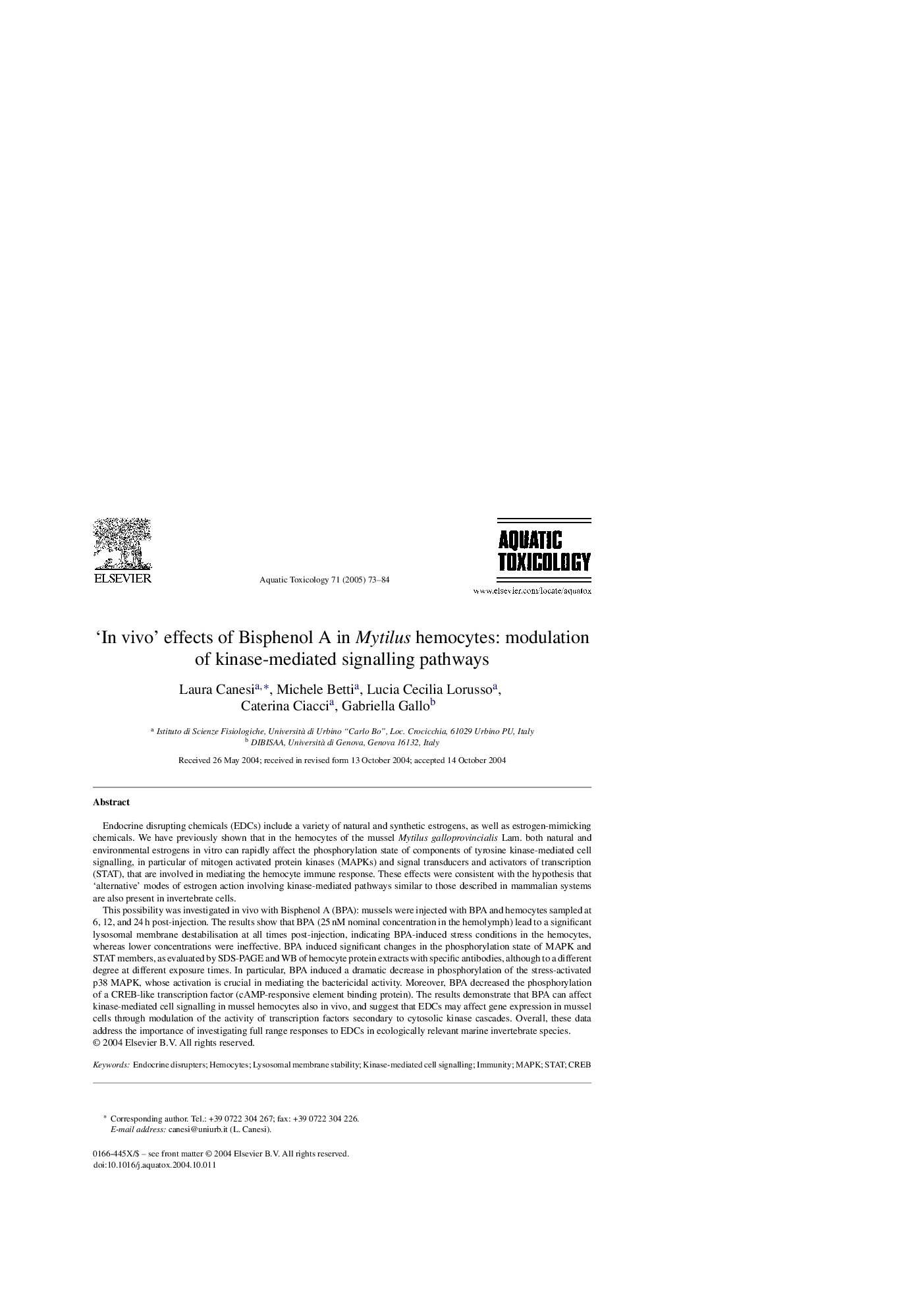| Article ID | Journal | Published Year | Pages | File Type |
|---|---|---|---|---|
| 9478388 | Aquatic Toxicology | 2005 | 12 Pages |
Abstract
This possibility was investigated in vivo with Bisphenol A (BPA): mussels were injected with BPA and hemocytes sampled at 6, 12, and 24Â h post-injection. The results show that BPA (25Â nM nominal concentration in the hemolymph) lead to a significant lysosomal membrane destabilisation at all times post-injection, indicating BPA-induced stress conditions in the hemocytes, whereas lower concentrations were ineffective. BPA induced significant changes in the phosphorylation state of MAPK and STAT members, as evaluated by SDS-PAGE and WB of hemocyte protein extracts with specific antibodies, although to a different degree at different exposure times. In particular, BPA induced a dramatic decrease in phosphorylation of the stress-activated p38 MAPK, whose activation is crucial in mediating the bactericidal activity. Moreover, BPA decreased the phosphorylation of a CREB-like transcription factor (cAMP-responsive element binding protein). The results demonstrate that BPA can affect kinase-mediated cell signalling in mussel hemocytes also in vivo, and suggest that EDCs may affect gene expression in mussel cells through modulation of the activity of transcription factors secondary to cytosolic kinase cascades. Overall, these data address the importance of investigating full range responses to EDCs in ecologically relevant marine invertebrate species.
Related Topics
Life Sciences
Agricultural and Biological Sciences
Aquatic Science
Authors
Laura Canesi, Michele Betti, Lucia Cecilia Lorusso, Caterina Ciacci, Gabriella Gallo,
